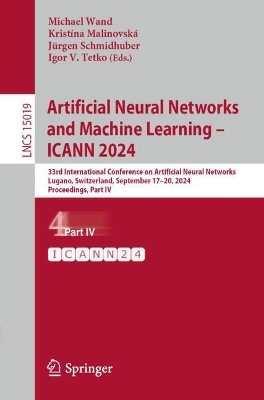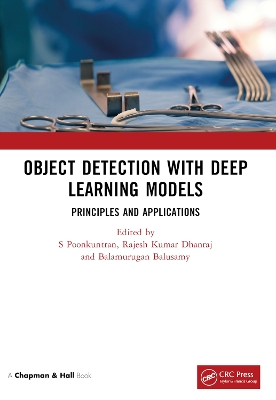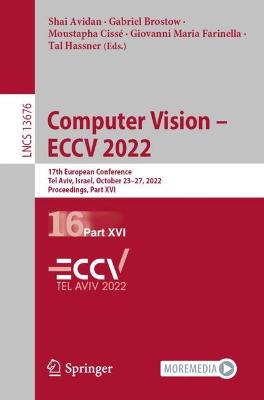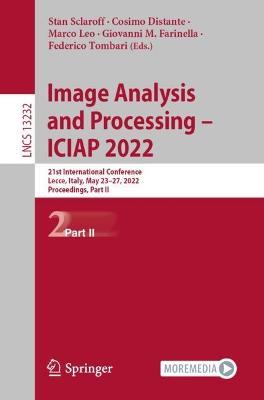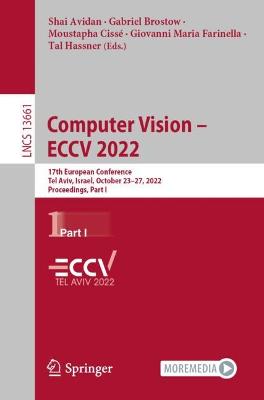Artificial Neural Networks and Machine Learning - ICANN 2024
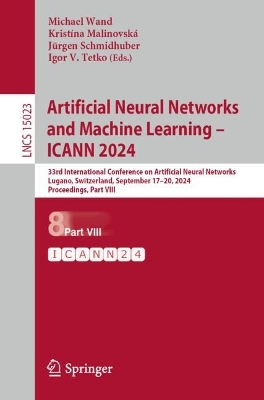 portes grátis
portes grátis
Artificial Neural Networks and Machine Learning - ICANN 2024
33rd International Conference on Artificial Neural Networks, Lugano, Switzerland, September 17-20, 2024, Proceedings, Part VIII
Tetko, Igor V.; Wand, Michael; Malinovska, Kristina; Schmidhuber, Juergen
Springer International Publishing AG
10/2024
463
Mole
9783031723520
15 a 20 dias
.- A deep learning multi-omics framework to combine microbiome and metabolome profiles for disease classification.
.- CapsDA-Net: A Convolutional Capsule Domain Adversarial Neural Network for EEG-Based Attention
Recognition.
.- ComplicaCode: Enhancing Disease Complication Detection in Electronic Health Records through
ICD Path Generation.
.- Depression detection based on multilevel semantic features.
.- Depression Diagnosis and Analysis via Multimodal Multi-order Factor Fusion.
.- Identify Disease-associated MiRNA-miRNA Pairs through Deep Tensor Factorization and Semi-supervised Learning.
.- Interpretable EHR Disease Prediction System Based on Disease Experts and Patient Similarity
Graph (DE-PSG).
.- Meteorological Data based Detection of Stroke using Machine Learning Techniques.
.- OFNN-UNI: Enhanced Optimized Fuzzy Neural Networks based on Unineurons for Advanced Sepsis
Classification.
.- ProTeM: Unifying Protein Function Prediction via Text Matching.
.- SnoreOxiNet: Non-contact Diagnosis of Nocturnal Hypoxemia Using Cross-domain Acoustic Features.
.- Unveiling the Potential of Synthetic Data in Sports Science: A Comparative Study of Generative Methods.
.- Medical Image Processing.
.- Adaptive Fusion Boundary-Enhanced Multilayer Perceptual Network (FBAIM-Net) for Enhanced Polyp Segmentation in Medical Imaging.
.- Advancing Free-breathing Cardiac Cine MRI: Retrospective Respiratory Motion Correction Via Kspace-and-Image Guided Diffusion Model.
.- Blood Cell Detection and Self-attention-based Mixed Attention Mechanism.
.- CellSpot: Deep Learning-Based Efficient Cell Center Detection in Microscopic Images.
.- Classification of dehiscence defects in titanium and zirconium dental implants.
.- CurSegNet: 3D Dental Model Segmentation Network Based on Curve Feature Aggregation.
.- DBrAL: A novel uncertainty-based active learning based on deep-broad learning for medical image classi cation.
.- EDPS-SST: Enhanced Dynamic Path Stitching with Structural Similarity Thresholding for Large-Scale Medical Image Stitching under Sparse Pixel Overlap.
.- Hop-Gated Graph Attention Network for ASD Diagnosis via PC-Based Graph Regularization
Sparse Representation.
.- MISS: A Generative Pre-training and Fine-tuning Approach for Med-VQA.
.- MSD-HAM-Net: A Multi-modality Fusion Network of PET/CT Images for the Prognosis of
DLBCL Patients.
.- Multi-Modal Multi-Scale State Space Model for Medical Visual Question Answering.
.- Predicting Deterioration in Mild Cognitive Impairment with Survival Transformers, Extreme Gradient Boosting and Cox Proportional Hazard Modelling.
.- Point-based Weakly Supervised 2.5D Cell Segmentation.
.- Relative Local Signal Strength: the Impact of Normalization on the Analysis of Neuroimaging Data with Deep Learning.
.- SCANet: Dual Attention Network for Alzheimer's Disease Diagnosis Based on Gated Residual and
Spatial Asymmetry Mechanisms.
.- SCST: Spatial Consistent Swin Transformer for Multi-Focus Biomedical Microscopic Image
Fusion.
.- KnowMIM: a self-supervised pre-training framework based on knowledge-guided masked
image modeling for retinal vessel segmentation.
.- Transferability of Non-Contrastive Self-Supervised Learning to Chronic Wound Image Recognition.
.- Two-stage Medical Image-text Transfer with Supervised Contrastive Learning.
.- A deep learning multi-omics framework to combine microbiome and metabolome profiles for disease classification.
.- CapsDA-Net: A Convolutional Capsule Domain Adversarial Neural Network for EEG-Based Attention
Recognition.
.- ComplicaCode: Enhancing Disease Complication Detection in Electronic Health Records through
ICD Path Generation.
.- Depression detection based on multilevel semantic features.
.- Depression Diagnosis and Analysis via Multimodal Multi-order Factor Fusion.
.- Identify Disease-associated MiRNA-miRNA Pairs through Deep Tensor Factorization and Semi-supervised Learning.
.- Interpretable EHR Disease Prediction System Based on Disease Experts and Patient Similarity
Graph (DE-PSG).
.- Meteorological Data based Detection of Stroke using Machine Learning Techniques.
.- OFNN-UNI: Enhanced Optimized Fuzzy Neural Networks based on Unineurons for Advanced Sepsis
Classification.
.- ProTeM: Unifying Protein Function Prediction via Text Matching.
.- SnoreOxiNet: Non-contact Diagnosis of Nocturnal Hypoxemia Using Cross-domain Acoustic Features.
.- Unveiling the Potential of Synthetic Data in Sports Science: A Comparative Study of Generative Methods.
.- Medical Image Processing.
.- Adaptive Fusion Boundary-Enhanced Multilayer Perceptual Network (FBAIM-Net) for Enhanced Polyp Segmentation in Medical Imaging.
.- Advancing Free-breathing Cardiac Cine MRI: Retrospective Respiratory Motion Correction Via Kspace-and-Image Guided Diffusion Model.
.- Blood Cell Detection and Self-attention-based Mixed Attention Mechanism.
.- CellSpot: Deep Learning-Based Efficient Cell Center Detection in Microscopic Images.
.- Classification of dehiscence defects in titanium and zirconium dental implants.
.- CurSegNet: 3D Dental Model Segmentation Network Based on Curve Feature Aggregation.
.- DBrAL: A novel uncertainty-based active learning based on deep-broad learning for medical image classi cation.
.- EDPS-SST: Enhanced Dynamic Path Stitching with Structural Similarity Thresholding for Large-Scale Medical Image Stitching under Sparse Pixel Overlap.
.- Hop-Gated Graph Attention Network for ASD Diagnosis via PC-Based Graph Regularization
Sparse Representation.
.- MISS: A Generative Pre-training and Fine-tuning Approach for Med-VQA.
.- MSD-HAM-Net: A Multi-modality Fusion Network of PET/CT Images for the Prognosis of
DLBCL Patients.
.- Multi-Modal Multi-Scale State Space Model for Medical Visual Question Answering.
.- Predicting Deterioration in Mild Cognitive Impairment with Survival Transformers, Extreme Gradient Boosting and Cox Proportional Hazard Modelling.
.- Point-based Weakly Supervised 2.5D Cell Segmentation.
.- Relative Local Signal Strength: the Impact of Normalization on the Analysis of Neuroimaging Data with Deep Learning.
.- SCANet: Dual Attention Network for Alzheimer's Disease Diagnosis Based on Gated Residual and
Spatial Asymmetry Mechanisms.
.- SCST: Spatial Consistent Swin Transformer for Multi-Focus Biomedical Microscopic Image
Fusion.
.- KnowMIM: a self-supervised pre-training framework based on knowledge-guided masked
image modeling for retinal vessel segmentation.
.- Transferability of Non-Contrastive Self-Supervised Learning to Chronic Wound Image Recognition.
.- Two-stage Medical Image-text Transfer with Supervised Contrastive Learning.

